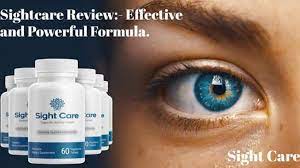Sight care, often referred to as eye care, encompasses a range of practices aimed at maintaining and improving eye health. It is crucial not only for preserving vision but also for ensuring overall well-being. In this article, we’ll delve into the essential aspects of Sight Care reviews, including preventive measures, common eye conditions, and effective treatments.
Preventive Measures for Healthy Eyes
- Regular Eye Exams
Regular eye examinations are fundamental to maintaining eye health. Routine check-ups help detect problems early, often before symptoms develop. Optometrists or ophthalmologists can identify conditions such as glaucoma, macular degeneration, and diabetic retinopathy during these exams. - Protecting Your Eyes
Protecting your eyes from environmental hazards is essential. This includes wearing sunglasses with UV protection to shield your eyes from harmful ultraviolet rays and using safety glasses when engaging in activities that could cause eye injuries. - Healthy Diet
A balanced diet rich in vitamins and minerals supports eye health. Foods high in antioxidants, such as leafy greens, carrots, and berries, can help prevent age-related vision problems. Omega-3 fatty acids found in fish are also beneficial for maintaining good vision. - Good Hygiene Practices
Proper hygiene is crucial, especially for contact lens users. Always wash your hands before touching your lenses and follow the recommended cleaning and replacement schedules. This helps prevent infections and other complications. - Managing Screen Time
Prolonged exposure to screens can lead to digital eye strain. To minimize this, follow the 20-20-20 rule: every 20 minutes, take a 20-second break and look at something 20 feet away. Adjusting screen brightness and using anti-glare filters can also help reduce eye strain.
Common Eye Conditions and Their Treatments
- Refractive Errors
- Myopia (Nearsightedness): Objects close to you appear clear, but distant ones are blurry. Corrective lenses or refractive surgery can improve vision.
- Hyperopia (Farsightedness): Distant objects are seen more clearly than close ones. Glasses or contact lenses can correct this condition.
- Astigmatism: Caused by an irregularly shaped cornea, it leads to blurred vision at all distances. Specialized lenses or surgery can address astigmatism.
- Cataracts
Cataracts occur when the eye’s natural lens becomes cloudy, leading to vision impairment. Surgery to remove the cloudy lens and replace it with an artificial one is a common and effective treatment. - Glaucoma
Glaucoma involves increased pressure within the eye, which can damage the optic nerve. Early detection and treatment with medications or surgery can help manage the condition and prevent vision loss. - Age-Related Macular Degeneration (AMD)
AMD affects the central part of the retina, leading to loss of central vision. While there is no cure, treatments such as medications, laser therapy, and dietary changes can slow its progression. - Diabetic Retinopathy
This condition results from damage to the blood vessels in the retina due to diabetes. Regular eye exams and managing blood sugar levels are crucial for preventing or managing diabetic retinopathy.
Conclusion
Sight care is a multifaceted approach to preserving eye health and vision. By adopting preventive measures, being aware of common eye conditions, and seeking timely treatment, you can protect your eyes and enjoy clear vision throughout your life. Regular eye check-ups and a proactive approach to eye health are key to maintaining optimal sight and overall well-being.


